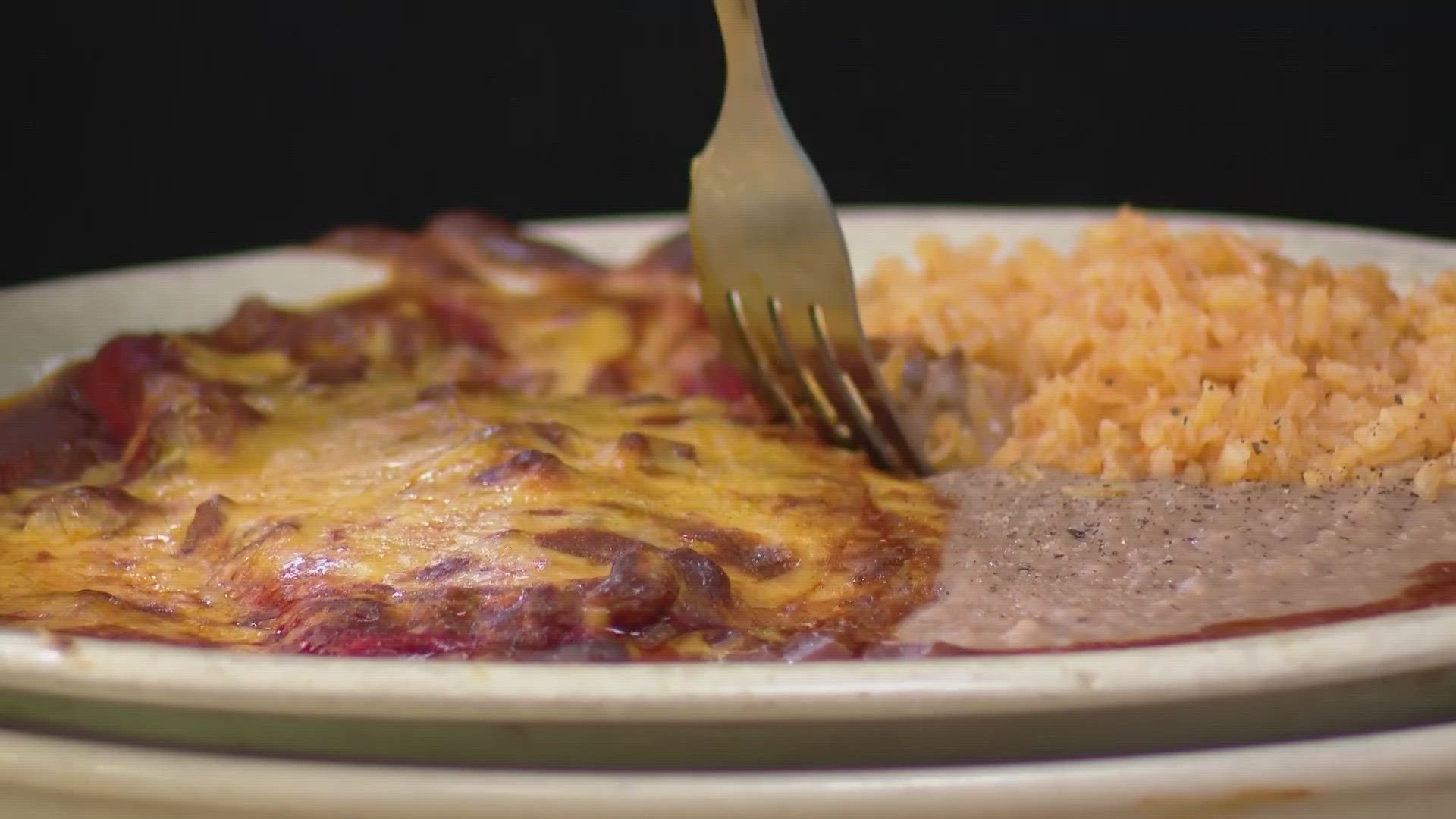SAN ANTONIO — If you put Tex-Mex food under the microscope, you'll find Mexican and American roots.
It's a cuisine caught in the middle. Local chefs consider the savory fare a beacon of unity.
KENS 5 is taking a closer look at how the cuisine has evolved and what experts predict for its future.
"You don't find this particular style of Tex-Mex food anywhere else. You can go to New Braunfels and it'll be different. Certainly you go to Austin and it's completely different," said Chef Steven Pizzini, owner of Lala's Gorditas on San Antonio's south side.
It's a cuisine embedded in our culture and in our identity.
For nearly two centuries, South Texas, specifically San Antonio, has sat front row center to witness the evolution of Tex-Mex.
"I believe that San Antonio is the home of Tex-Mex food," said Pizzini.
The birth of Tex-Mex
The cuisine is said to have begun in the mid 1800's with the Chili Queens. These women graced San Antonio plazas with open-air food stands selling guisados, a stew of sorts, blending European ingredients with traditional Mexican recipes.


"Recipes that date back almost 10,000 years to the first indigenous groups that lived in this area that cooked in earth-in ovens and made the guisados from what was available on the land: Wild hare, deer, a lot of cactus, chile, squash, beans, corn," said Rico Torres, Chef and Owner of Restaurant Mixtli. "San Antonio became this area where people from all around the country wanted to come down and experience these flavors for themselves."
The iconic Chili Queens were run out of business when San Antonio enforced strict early Sanitary Reform Laws.

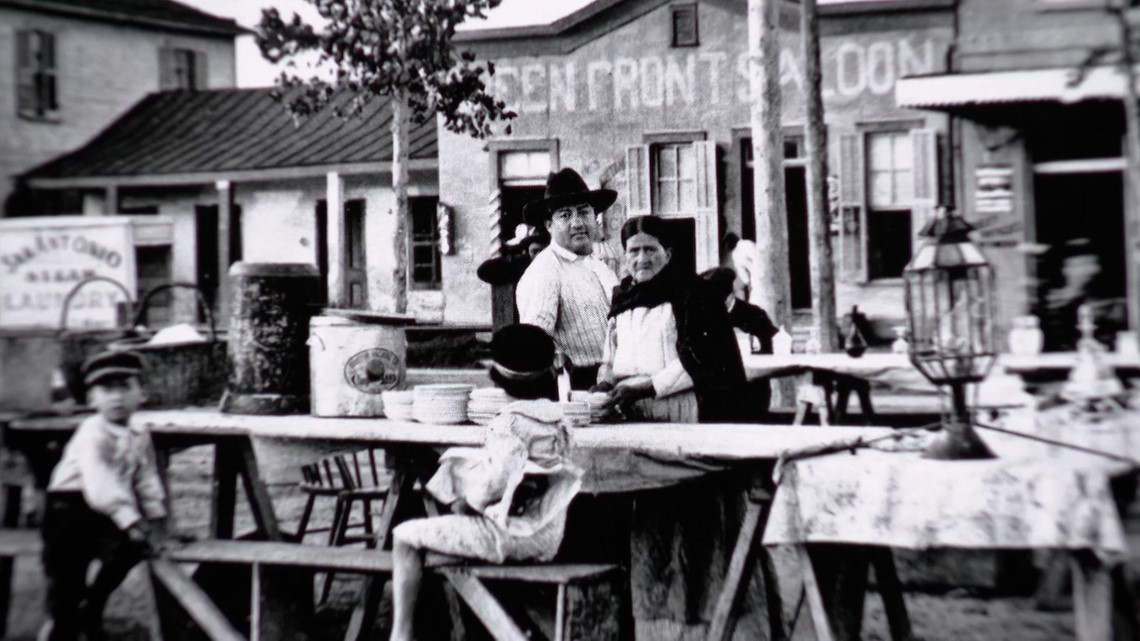
"By the early '40s, there was no Chili Queens left. It was this idea that if you weren't white and making these foods that it wasn't sanitary," said Torres. "If Mexicans are making it, I also have to prove to you that I'm clean. That discrimination was embedded in the food early on."
From the 1940's until the 2000's, the cuisine shifted to the style many of us are accustomed to today.
"Tex-Mex is this term that I believe people want to say Diana Kennedy coined it in the early '70's almost as a way to describe the food of this area in a derogatory sense. Maybe at the time it deserved it," said Torres. "Tex-Mex is very commercial. It's cheap. It's Mexican foods made by anglos, sold to anglos with no respect for the creative agency that had originally curated it."

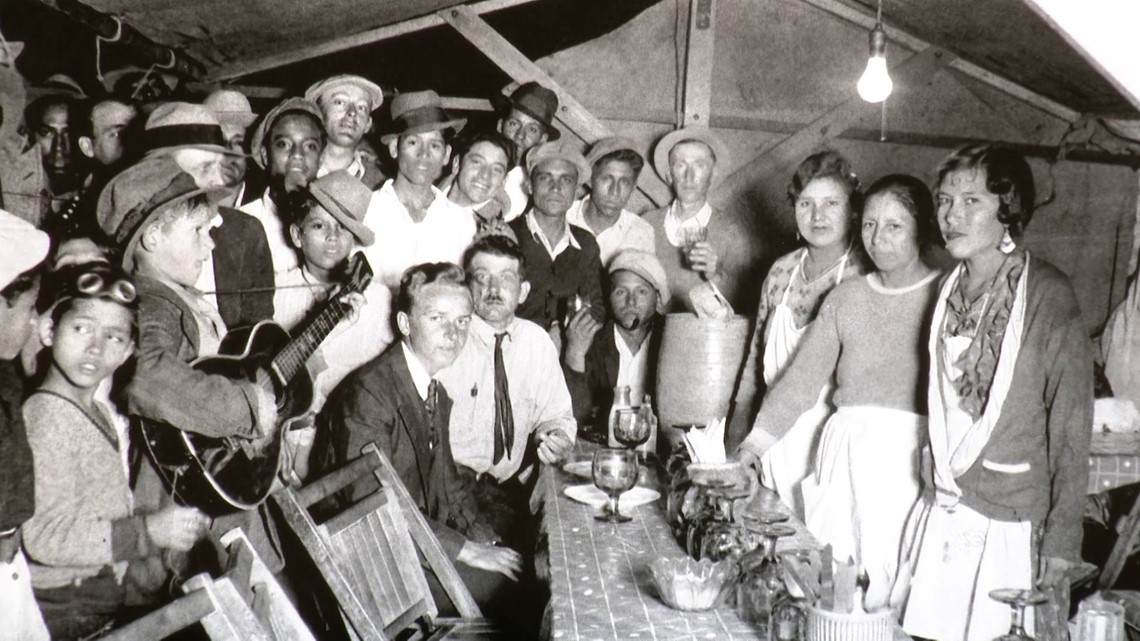
The yellow cheese, introduced to Tex-Mex, pointed to the easy accessibility of these ingredients at the time.
"In Mexico you don't see a lot of yellow cheeses. It's white cheeses. The cotija, the queso fresco," explained Chef Torres. "So those little changes started to create it's own type of food."
Even with these changes to the cuisine, we indulge.
These ingredients add to the nostalgic aspect. They taste like home.
"Seeing your mom make these types of dishes. Or at a time when a lot of things were canned and highly processed. Things like enchiladas with the Wolf brand chili come out and the highly processed yellow cheese, all of that has its time, place and reason," said Torres.

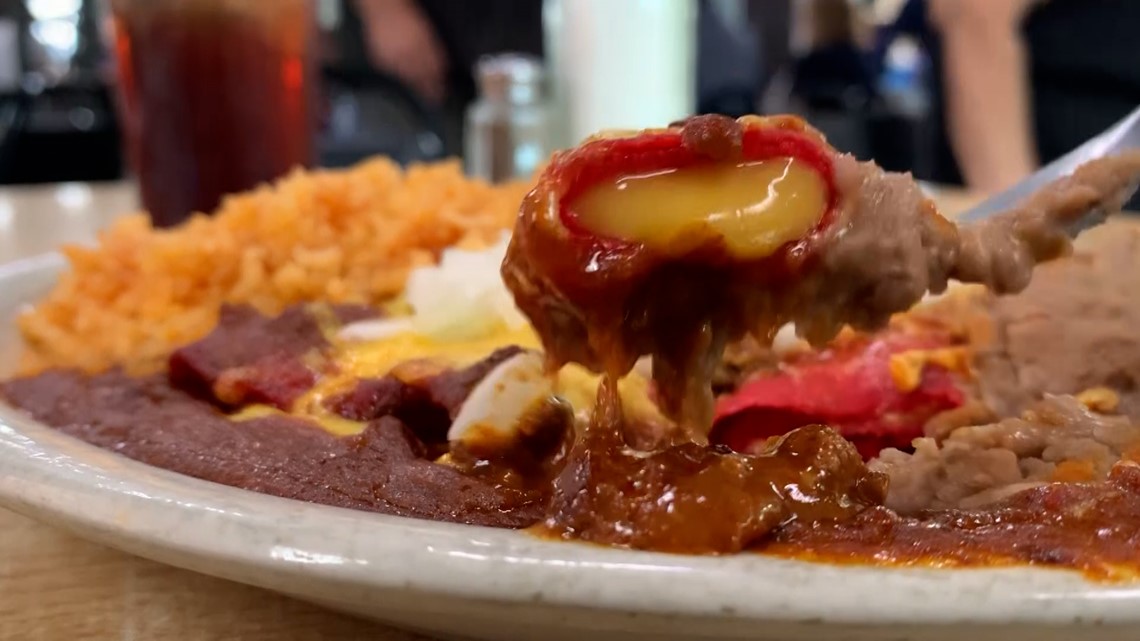
Right around the exit of the Chili Queens, Chef Steven Pizzini's family planted culinary roots in the Alamo City.
"What is South Texas without Tex-Mex food?" we asked Pizzini.
"It's not South Texas," he replied.
"My great-uncle Frank in 1932 manufactured and invented the molino that we still use," said Pizzini. "As a child, we called it Mexican food."
Using his grandmother's recipes from Mexico, Pizzini's aunt, Ernestine Pizzini Chapa, opened Teka Molino in 1938.
Taco Hut, a south side landmark, opened 20 years later as part of the Pizzini family portfolio.

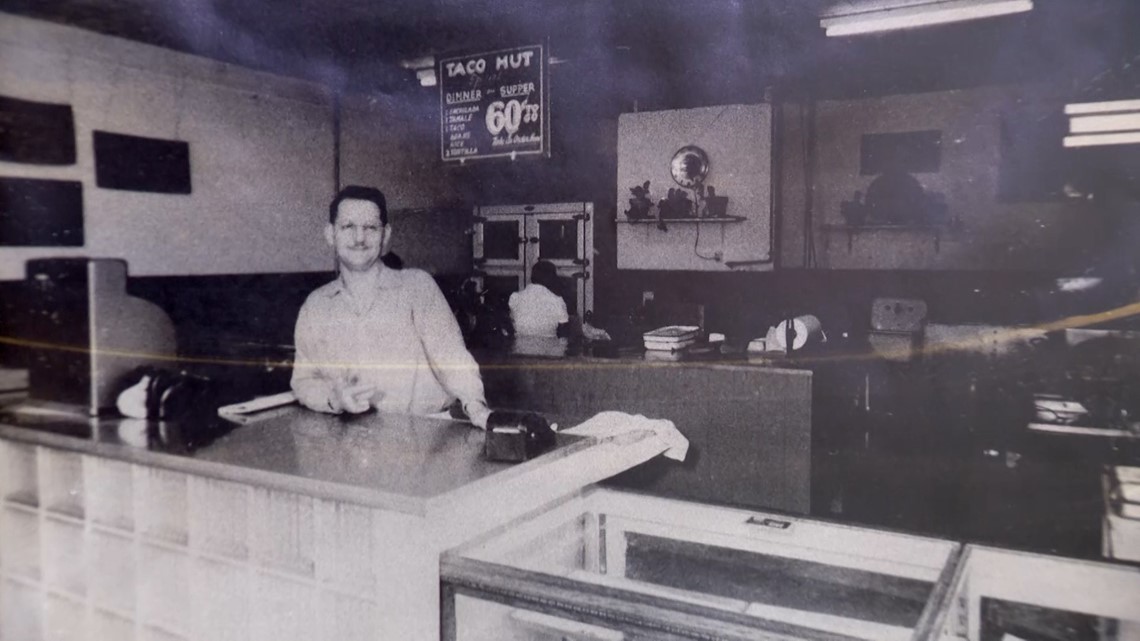
Each restaurant -- a Tex-Mex staple.
"I started using the word Tex-Mex in 1992," said Pizzini. "In 1996, when I owned the Taco Hut, I patented the slogan 'Where the Tex got the Mex.'"
Today, Pizzini owns and operates Lala's Gorditas, located around the corner from Mission Concepción. The restaurant is named after his maternal grandmother, Adelaide.
"We consider ourselves the home of the puffy taco," said Pizzini.
Using his uncle's molino, he serves his grandmother's original recipes to loyal customers who grew up with them.
Late last year, food critics attacked Tex-Mex proclaiming the death of the cuisine as we know it. Authors claim Tex-Mex must "...evolve... or risk disappearing."
It's an assertion that strikes a nerve with Chef Pizzini. He believes consistency and tradition are critical to survival.
"Tex-Mex food, the ingredients, the spices, that's what defines Tex-Mex food," he explained. "Cominos, yellow cheese, cheddar cheese. If you don't have those two things in your Tex-Mex food, it's not Tex-Mex food, right?"

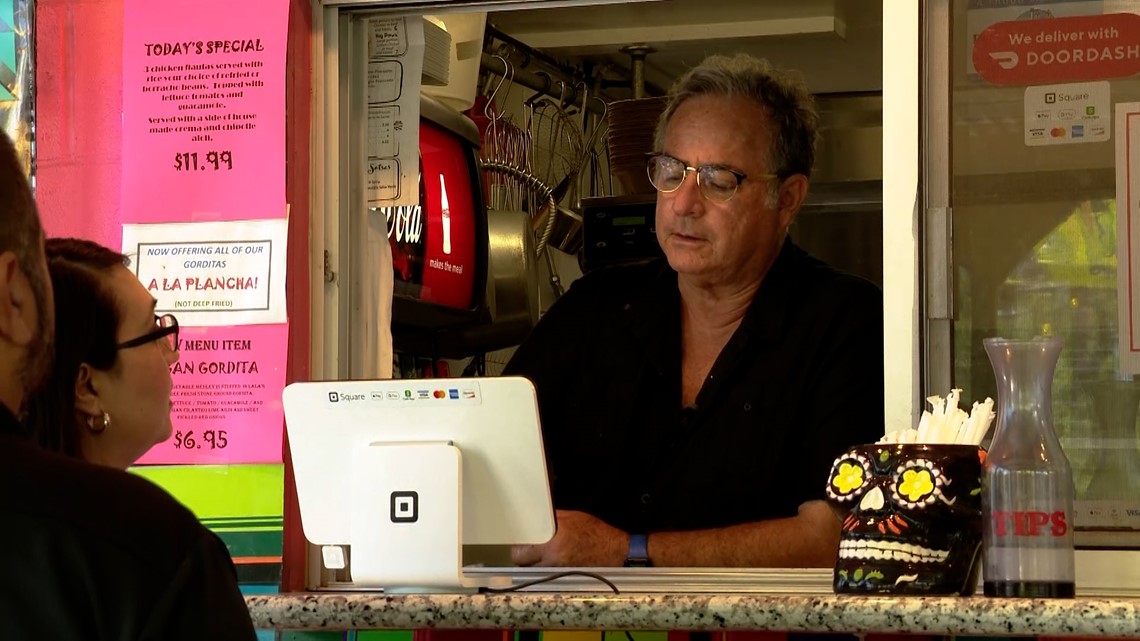
Teka Molino is no longer in the Pizzini Family, but the restaurant still serves their original recipes -- which haven't changed for nearly a century.
"Let's honor, let's celebrate Tex-Mex food. Let's not dismiss it. It is a cuisine, regardless of what social media has to say about it."
"What do you see for the future of Tex-Mex?" we asked Pizzini.
"Preservation. I don't want it to change. It tastes great," he replied. "Why would you want to mess with something that's so good?"
A twist on Tex-Mex
Chef Juan Rodriguez, owner of Tamale Boy, grew up selling tamales door-to-door with his mother on the west side.
"To me, that was fun! I liked it," he said.
At 22, Rodriguez decided to start his own business selling tamales.
25 years ago, his wife pitched a radical idea to boost sales.
"My wife is white and I'm Hispanic, so one day she's all, 'Why don't we put cream cheese in the chicken tamales?' I was like, 'No! That's a horrible idea, that's crazy! We only eat tamales with pork and bean, with or without chile!'" said Rodriguez, with a smile.
He took a leap of faith and tried it, but no one showed interest in these unusual tamales -- at least in cities west of San Antonio with a heavy Hispanic population.
"I would only sell in Somerset, Lytle, Natalia, Devine, Hondo, La Coste and Castroville at the beginning. Nobody wanted that. Everybody was like, 'No, I want the pork! Give me the pork tamales!'" he recalled.
"All these people were telling me, 'You need to go to Universal City where there's more white people who might like cream cheese in their tamales,'" said Rodriguez. "Universal City, Converse, Cibolo, Schertz, Marion. It just took off like wildfire."
Since then, his family's culinary invention earned the name 'The Kadillak.' It's a tamal containing cream cheese, chicken, spinach and jalapeños.

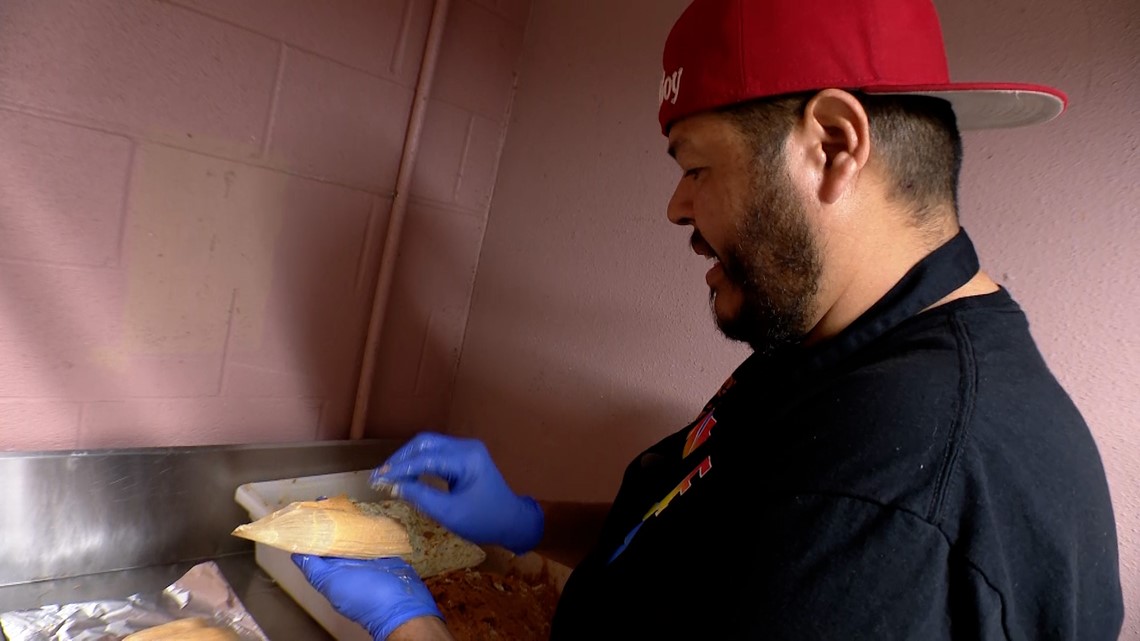
"You have to try this! This is the cadillac of all tamales!" he said, impersonating a customer. "For me and my family, I felt like it revolutionized tamales for us all around because nobody has heard about it, nobody was selling it."
His quick success motivated him to evolve his menu even further, adding brisket, barbacoa, Spam, pepperoni -- even egg roll ingredients to his tamales.
Rodriguez built a customer base far beyond San Antonio. He says his twist on the Tex-Mex staple, the tamal, earned loyal customers who drive in from Dallas, Houston, Fort Worth and West Texas to buy 20 to 30 tamales at a time.
"Yo les quiero hacer sus chiflazones a la gente...Whatever they want, I wanna make it," said Rodriguez.
Health-conscious Tex-Mex
In recent years, as consumers pay more attention to ingredients they're putting in their body, more Tex-Mex menus are featuring gluten-free, dairy-free, low-salt options.
More chefs are also catering to customers with dietary restrictions.
"Some people don't eat lard in their tamales, in the masa. We'll make tamales without lard," said Chef Rodriguez. "Some people can't have MSG. Sometimes the beef has MSG's in the broth. We don't use that broth."
Vegan and vegetarian options are becoming a mainstay on Tex-Mex menus.
"We started selling vegan gorditas for our vegan customers," said Chef Pizzini. "We're now using non-GMO corn for a healthier version of our masa. I use curtido, which is a Central American cabbage slaw to garnish our food to up the game a little bit to make things a bit more fresh and current."
Lard, specifically, is an ingredient embedded in family recipes. In 2021, a survey among Mexican restaurants showed a link between lard and obesity in the establishment's most common customers.
The survey found lard "...is used in 71% of surveyed restaurants in Texas and 50% in California. In both states, obesity is highly prevalent among Hispanic Americans (40% in Texas and 36% in California)."
"We have an eye towards living longer and this ain't the way. Frying everything, deep frying everything, everything in lard. It's not gonna cut it," said Torres. "I think that's the most significant change for Tex-Mex coming up."
Tex-Mex coming full-circle
Before our eyes, we see in many spaces the originality of this cherished cuisine coming back.
"Some of it is not history we want to be proud about, but it's something we can learn from and make better decisions moving forward," said Torres.
More ingredients originating in Mexico are easier to get.
Mixtli, which means 'cloud' in Nahuatl, travels from state to state in their menu -- working to tell the history of Mexico through its gastronomy.
"This restaurant early on decided we didn't want to be in the future too much. We really wanted to use it as a time capsule to explore the past," Torres explained. "A lot of what we're doing is re-educating the client."

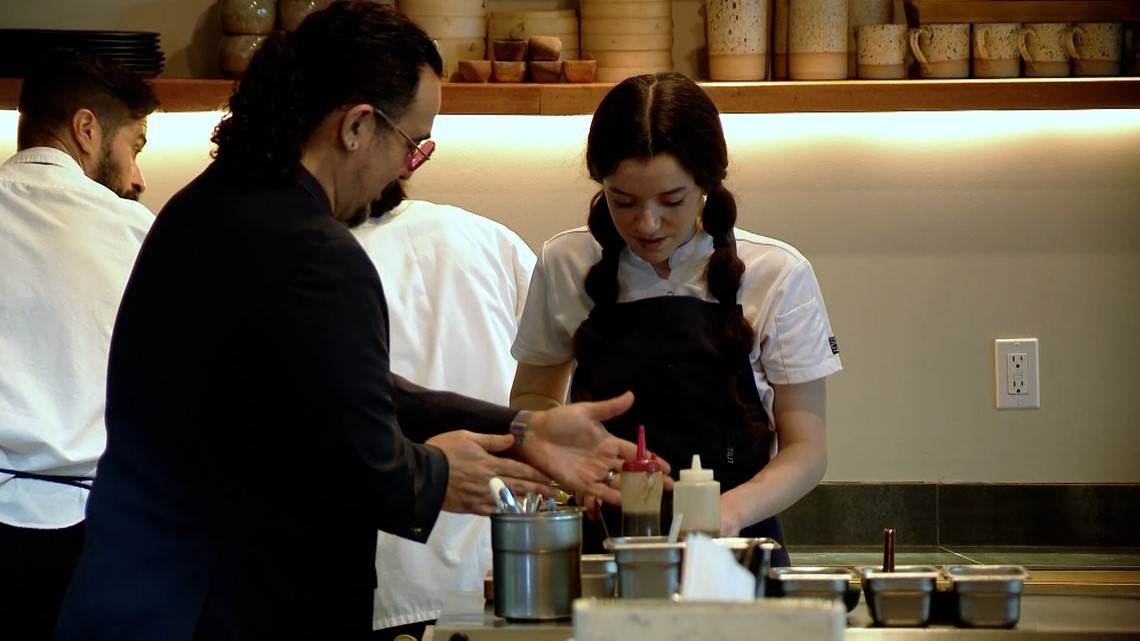
More world travelers are also craving the unique flavors they experienced abroad, boosting demand for authentic ingredients.
Many believe Tex-Mex has come full circle.
"When that word [Tex-Mex] came out as derogatory, and I agree with it, back then, I think it's time we change it now," said Chef Torres. "I think it's time we take it back and honor it the way it's supposed to be honored."
It's the food of all people, with a rich history and a promising future.
"It's our heritage. Let's honor it. Let's respect it. Let's celebrate it," said Pizzini. "More importantly, let's eat it!"
Take a look at some the Tex-Mex restaurants we recently featured in KENS 5's Neighborhood Eats:
- 'Where the locals go'; Huge tacos served in Gruene at hidden gem food truck | Neighborhood Eats
- Craving authentic Mexican food? This San Antonio restaurant has it all | Neighborhood Eats
- 'A perfect representation of San Antonio'; Mexican restaurant known for huge plates, low prices, good vibes | Neighborhood Eats
- San Antonio Mexican restaurant becomes so popular, they've expanded to 15 locations | Neighborhood Eats
- Authentic Mexican restaurant debuts 'late-night' menu | Neighborhood Eats

